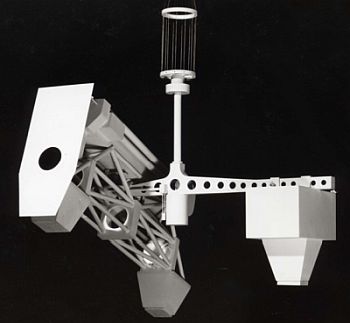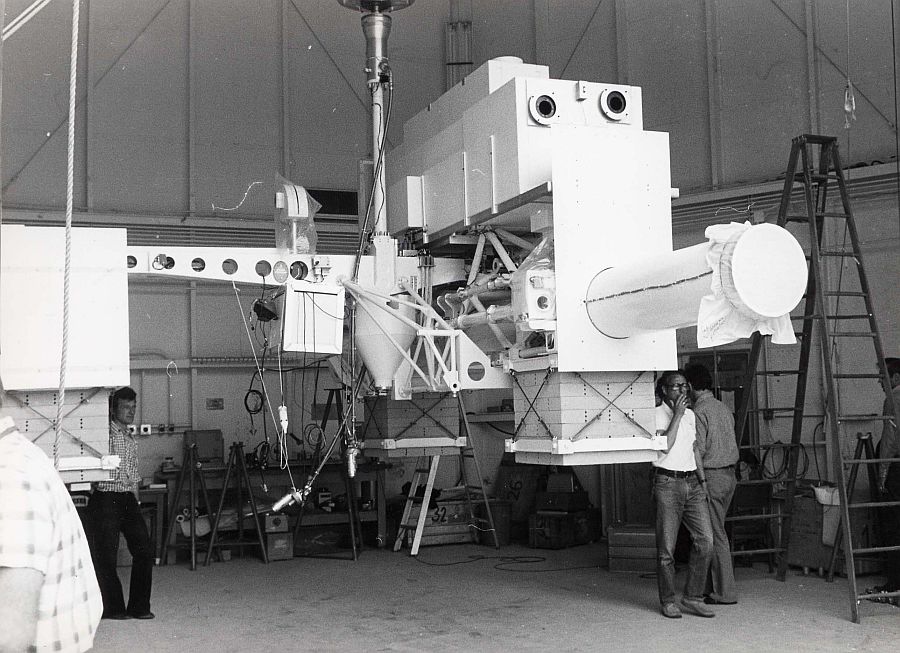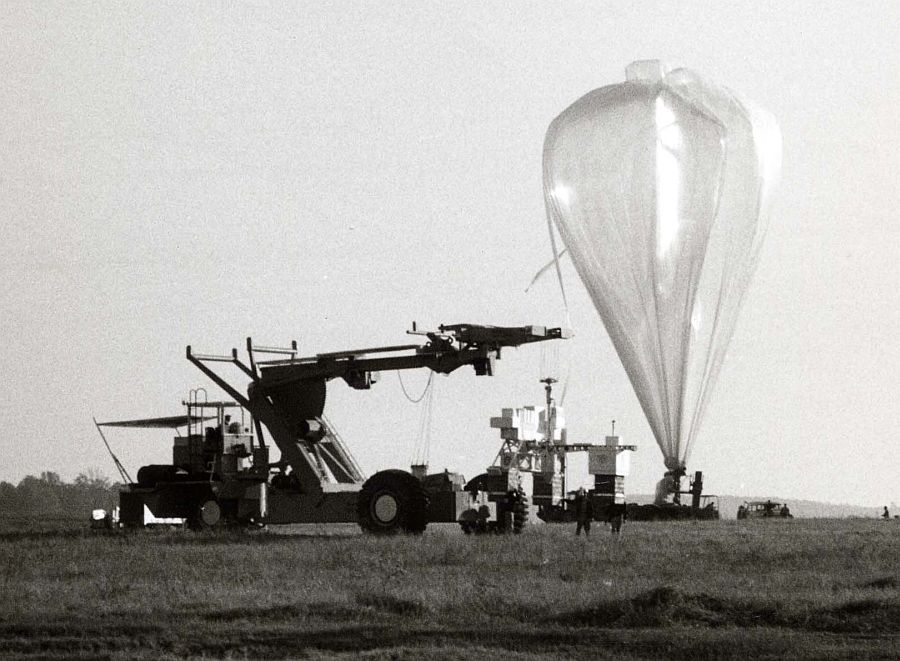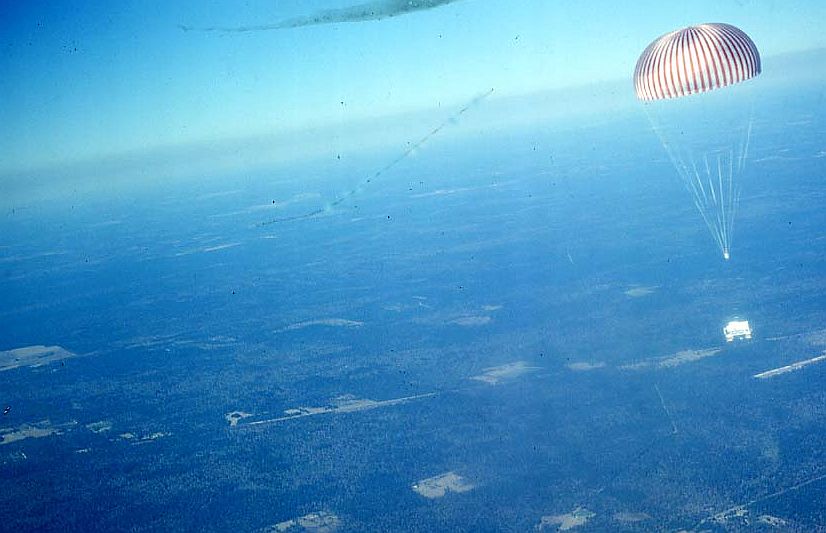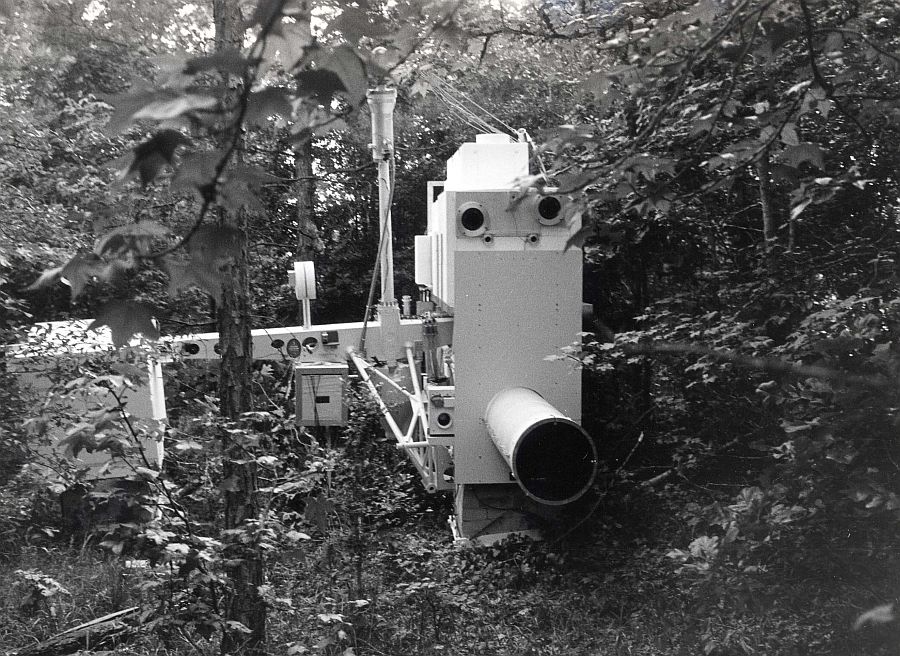Purpose of the flight and payload description
The SPEKTROSTRATOSKOP was an uncrewed balloon-borne solar observatory developed in late 1960s at the Fraunhofer Institut, in Freiburg im Breisgau, Germany in order to obtain simultaneous pictures and spectra of solar features with the highest possible spectral and spatial resolution. The instrument was manufactured by the firm Carl Zeiss from Oberkochen.
In the image at left we can see an scheme of the instrument (click to enlarge). It combined a telescope with a high-resolution spectrograph and an Ha-Lyot filter. The instrument used a 30.5 cm aperture parabolic mirror with an f/8 ratio and an equivalent focal length of 63 meters. A small Newtonian mirror reflected a 2 x 2 arcminute section of the primary image sideways, which was then magnified twice by a transfer lens system before reaching the spectrograph slit.
The spectrograph was designed in a Littrow configuration and employed a Bausch & Lomb diffraction grating with a 16 x 21 cm ruled surface and 600 lines per millimeter. It operated in the fourth order for Ha and fifth order for green light, achieving a spectral resolution of approximately 400,000. The system included two transfer lens systems that reimaged both the primary spectrum and the light reflected from the slit jaws onto separate camera film planes with 12.5x magnification.
The instrument incorporated a Lyot filter that could be inserted into the f/200 beam near one of the transfer lens systems. A dichroic beam splitter placed before the Lyot filter provided an additional white light image that was used for both television transmission to the ground and the fine guidance system.
The final images measured 24 x 36 mm, while the spectra were 24 x 72 mm. The system achieved a dispersion of about 10 mm per angstrom and an angular scale of 3.3 arcseconds per mm. This translated to spatial and spectral resolution limits of 0.3-0.4 arcseconds and 12 mA for every 0.1 mm on the film.
The instrument package was supported at its center of gravity by a spherical oil-pressure bearing and featured three torque motors for pitch, yaw, and roll control. A second oil-pressure bearing at the top of the supporting frame helped decouple the instrument from balloon movements. The system employed a three-stage guidance system: a coarse guidance that oriented the frame toward the sun, an intermediate guidance using a limb sensor for pointing accuracy within 1 arcsecond, and a fine guidance system using granulation tracking that achieved 0.1 arcsecond precision.
To address focus variations caused by temperature changes, the instrument included an automatic focusing system that used a pinhole scanner to monitor granulation contrast. The total weight of the instrument was kept under one ton
Details of the balloon flight
Balloon launched on: 5/17/1975
Launch site: Columbia Scientific Balloon Facility, Palestine, Texas, US
Balloon launched by: National Scientific Balloon Facility (NSBF)
Balloon manufacturer/size/composition: Zero Pressure Balloon Winzen - 162.616 m3 (25.40 microns)
Flight identification number: 889P
End of flight (L for landing time, W for last contact, otherwise termination time): 5/17/1975
Balloon flight duration (F: time at float only, otherwise total flight time in d:days / h:hours or m:minutes - ): F 9 h
Payload weight: 2466 kgs
This was the first and only succesfull scientific flight of the Spektrostratoskope system. The flight, with a total of 5 1/2 hours of pure observation time, resulted in about 400 spectrograms and 1000 white light pictures of photospheric granulation, mainly at the center of the solar disk.
Postal cover issued on launch day commemorating the flight
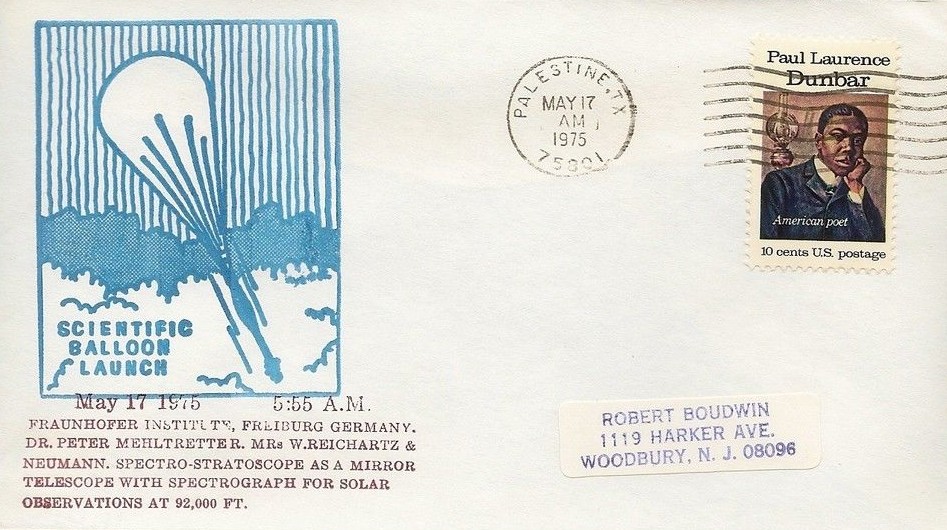
External references
- A comparison of artificial solar granules with real solar granules Solar Physics, vol. 97, p. 213
- Balloon-borne imagery of the solar granulation. II - The lifetime of solar granulation Astron. Astrophys. 62, 311
- National Scientific Balloon Facility Annual Report FY 1975 National Center for Atmospheric Research, November 1975
- On the center to limb variation of the granular brightness fluctuations Astronomy and Astrophysics, vol. 75, no. 1-2, May 1979, p. 223
- Spectrostratoscope: A Balloon-Borne Solar Observatory Applied Optics Vol. 3, Issue 12, pp. 1359-1361 (1964)
- Turbulence, Fractals, and the Solar Granulation In Applying Fractals in Astronomy. Lecture Notes in Physics Monographs, vol 3. Springer, Berlin, Heidelberg
1640If you consider this website interesting or useful, you can help me to keep it up and running with a small donation to cover the operational costs. Just the equivalent of the price of a cup of coffee helps a lot.

